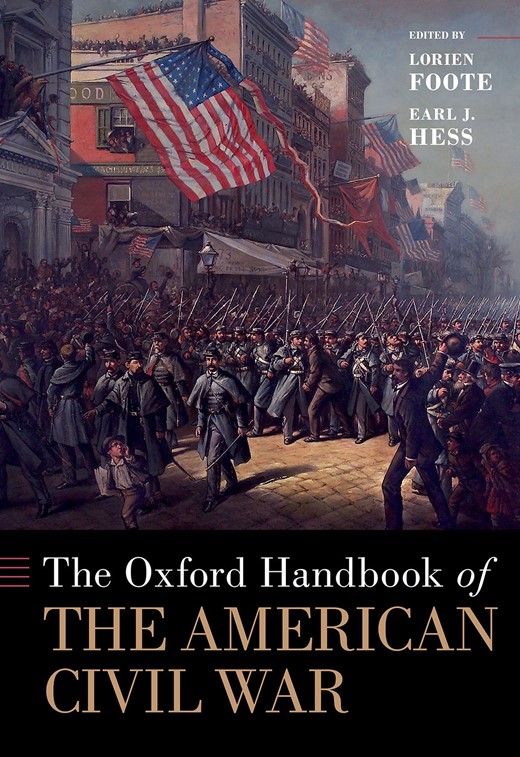 The Oxford Handbook of the American Civil War
The Oxford Handbook of the American Civil War
Contents
-
-
-
-
-
-
-
-
-
-
-
-
-
-
-
-
-
-
-
-
-
Three Partisan Armies: Combatants and Commanders Three Partisan Armies: Combatants and Commanders
-
Cedar Mountain Prelude Cedar Mountain Prelude
-
The Battle (August 28–30) The Battle (August 28–30)
-
Aftermath Aftermath
-
Notes Notes
-
Bibliography Bibliography
-
-
-
-
-
-
-
-
-
-
-
-
-
-
-
-
-
-
-
-
-
-
-
-
-
17 Second Bull Run/Manassas: Clash of Partisan Armies
Get accessJohn H. Matsui earned his Ph.D. in history at Johns Hopkins University. He has taught at the Virginia Military Institute and Washington and Lee University, where his courses included U.S. history, the Civil War and Reconstruction, and Jacksonian America.
-
Published:13 October 2021
Cite
Abstract
The summer of 1862 witnessed the struggle between Northern Republican and Democratic ideologies embodied in the Army of Virginia and the Army of the Potomac even as Union and Confederate armies faced off in the Second Manassas Campaign. Formed to protect Washington while Maj. Gen. George McClellan advanced on Richmond, the Army of Virginia and its leader, Maj. Gen. John Pope, implemented a Republican or “hard war” policy of military occupation by confiscating civilian property and imposing loyalty oaths. Northern and Southern Democrats (characterized by McClellan and Maj. Gen. Thomas J. “Stonewall” Jackson, respectively) recognized the threat that Pope’s ideology posed and sought to crush it, either by delaying reinforcement or decisive battlefield defeat. The defeat of Pope and his army by Confederate forces at Second Manassas delayed but did not destroy the twin Republican agendas of emancipation and destruction of the Confederacy. Pope and his political generals prefigured the total-war policies of the war’s last year.
Sign in
Personal account
- Sign in with email/username & password
- Get email alerts
- Save searches
- Purchase content
- Activate your purchase/trial code
- Add your ORCID iD
Purchase
Our books are available by subscription or purchase to libraries and institutions.
Purchasing information| Month: | Total Views: |
|---|---|
| October 2022 | 12 |
| December 2022 | 3 |
| January 2023 | 4 |
| February 2023 | 4 |
| March 2023 | 4 |
| April 2023 | 3 |
| May 2023 | 3 |
| June 2023 | 2 |
| July 2023 | 2 |
| August 2023 | 1 |
| September 2023 | 2 |
| October 2023 | 2 |
| November 2023 | 4 |
| December 2023 | 5 |
| January 2024 | 1 |
| February 2024 | 1 |
| March 2024 | 2 |
| April 2024 | 5 |
| May 2024 | 1 |
| June 2024 | 12 |
| July 2024 | 1 |
| September 2024 | 6 |
| December 2024 | 3 |
| February 2025 | 2 |
| May 2025 | 3 |

Get help with access
Institutional access
Access to content on Oxford Academic is often provided through institutional subscriptions and purchases. If you are a member of an institution with an active account, you may be able to access content in one of the following ways:
IP based access
Typically, access is provided across an institutional network to a range of IP addresses. This authentication occurs automatically, and it is not possible to sign out of an IP authenticated account.
Sign in through your institution
Choose this option to get remote access when outside your institution. Shibboleth/Open Athens technology is used to provide single sign-on between your institution’s website and Oxford Academic.
If your institution is not listed or you cannot sign in to your institution’s website, please contact your librarian or administrator.
Sign in with a library card
Enter your library card number to sign in. If you cannot sign in, please contact your librarian.
Society Members
Society member access to a journal is achieved in one of the following ways:
Sign in through society site
Many societies offer single sign-on between the society website and Oxford Academic. If you see ‘Sign in through society site’ in the sign in pane within a journal:
If you do not have a society account or have forgotten your username or password, please contact your society.
Sign in using a personal account
Some societies use Oxford Academic personal accounts to provide access to their members. See below.
Personal account
A personal account can be used to get email alerts, save searches, purchase content, and activate subscriptions.
Some societies use Oxford Academic personal accounts to provide access to their members.
Viewing your signed in accounts
Click the account icon in the top right to:
Signed in but can't access content
Oxford Academic is home to a wide variety of products. The institutional subscription may not cover the content that you are trying to access. If you believe you should have access to that content, please contact your librarian.
Institutional account management
For librarians and administrators, your personal account also provides access to institutional account management. Here you will find options to view and activate subscriptions, manage institutional settings and access options, access usage statistics, and more.